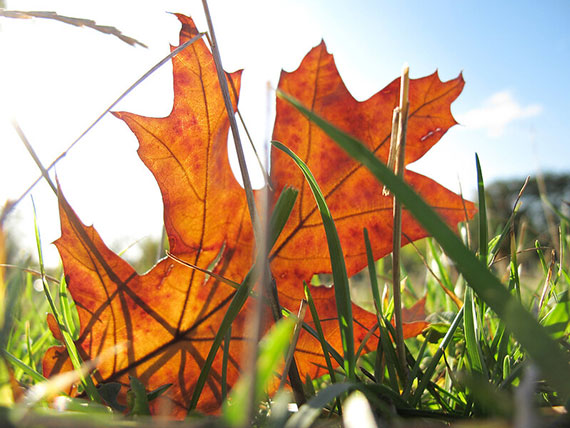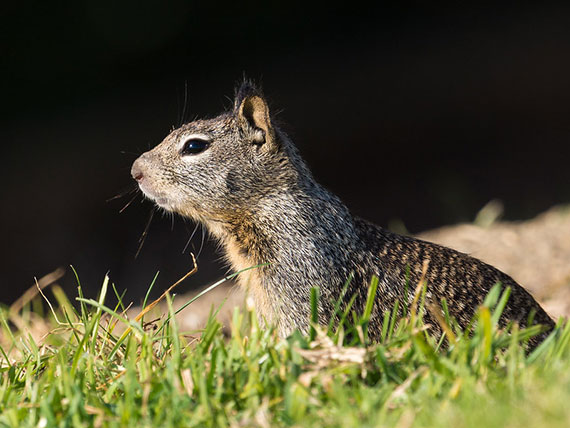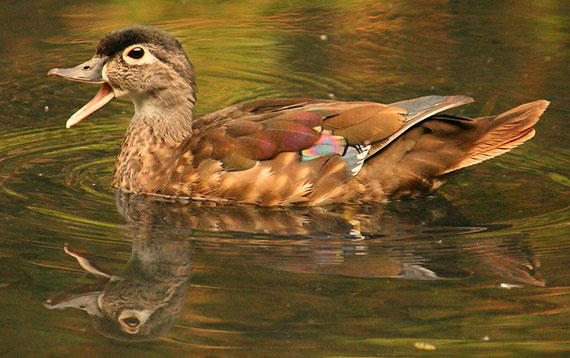One of the most common questions I am asked at workshops is where I go to get my reference photos. Most people assume that I travel far and wide to get my shots. This is true; I do travel as much as I can, but the bulk of my photo archive comes from places photographed within 100 kilometers (60 miles) of my home. Good reference photos for your art are just outside your front door; you just have to open your eyes and look—really look!

Photo by Paul Nuttall; ISO 80, f/2.8, 1/640-second exposure.
The following article is a simple guide of how to look and see your surroundings and find their hidden beauty.
The Equipment
To achieve good photographs you obviously have to have a camera, but what camera do you need? My suggestion is a DSLR camera (or mirrorless) for several reasons. First, the lenses on SLRs are interchangeable, so you can achieve much more with a single camera. As your abilities increase you will want to purchase new lenses or better lenses than you started with. All-in-one cameras don’t allow for any upgrades or interchanging of lenses.
An SLR camera also allows you to attach longer focal length lenses. As for what brand to buy, it all comes down to preference. Today most DSLRs are going to take a great picture. The only thing you need to concern yourself with is the expandability of the make and model you purchase.
In my experience, Canon (which I use), Nikon, and Sony (which will fit all your old Minolta lenses) are the most reliable and expandable models on the market today. Start with a camera body, a good short range lens like a 18–55mm, and if money allows, a half decent telephoto lens like a 100–400 to get those far away shots. If you’re planning to photograph a lot of wildlife like I do, then a 100–400mm lens is a must-have.
Observation
Traveling to Africa or Alaska is the obvious way to get great dramatic pictures, but it’s very expensive. The drama in your backyard can be just as dramatic if you know where to look and what to look for. Lighting is everything. Learn to see light and position yourself to capture natural light in its most flattering state.

Photo by Don DeBold; ISO 200, f/5.6, 1/640-second exposure.
What do I mean by this? Most people stand with the natural light behind them so that they are photographing into a scene flooded with light. This light is great for a fast exposure but tends to “flatten” a scene because everything has the same intensity and lighting. If you position yourself so that you are shooting into the natural light you create dramatic “back-lighting” which has much more shape and form.
Try to set up the composition in your viewfinder so that lighted areas overlap shadowed areas. This will create a wonderful sense of depth. Overlapping will also create strong contrast in the composition and tends to help the sense of form in a picture. Taking the same shot with different exposure settings will also drastically change the quality of light in your photo. It’s good practice to take several different shots with under exposed and over exposed settings to make sure you will return to the studio with at least one shot perfectly exposed.
Look for things that add character or drama to your photos. Directional lines help create a sense of movement. Position yourself to take pictures with strong visual lines that travel through your picture. This means that the line should enter from one side of your frame and leave the photo on one of the three other sides. Diagonal lines are the most productive for drawing the viewer into your picture and creating depth. Lines can also be made by changes in light (light to shadow), the edges of two objects meeting, tonal changes, and warm to cool changes.

Photo by Bonnie Shulman; ISO 16000, f/5.6, 1/800-second exposure.
Learn to Capture Simple Things
Look past the obvious and see the wonder in simple things. I have photographed hundreds of old barns and pieces of farm equipment over the years and some of those photos became the reference for my strongest art pieces. Objects that are old and aged create a sense of nostalgia. Whenever I see an old barn, the first thing I think of is what that old barn could tell us. Sometimes what you’re photographing has is own character and charm. This character or charm then translates into “mood” or “presence” and creates life in your photos.
Barns are not the only thing with natural appeal to people. Colorful skies, rolling green fields, waterfalls, and babbling brooks all have a certain “character” to them that is natural and interesting. Ponds are a great location for not only settings, but wildlife. My pond offers a tapestry of color, form, directional lines, contrast, and shapes. I have photographed almost every songbird indigenous to my area. The small waterfall is a favorite bathing spot for them. In addition to the birds are frogs, raccoons, fox, deer, squirrels, chipmunks, and so on and so on.
The key to observation is to never stop looking. The same scene can look very different at different times of day. Lighting changes, climate changes, mood changes. Look beyond the “norm” and learn to see the basic beauty that is in everything around us. Humans really are the luckiest of all species because we have both the power to see and the power to appreciate!
About the Author:
Derek C Wicks is an internationally acclaimed wildlife artist whose work has been used to endorse many conservation efforts and charities. Derek’s full biography can be viewed on his wildlife art website.
Like This Article?
Don't Miss The Next One!
Join over 100,000 photographers of all experience levels who receive our free photography tips and articles to stay current:





Why do I need a DSLR. !! what is wrong with a Mirrorless and/or MFT camera’s they have interchangeable lenses and are a whole lot lighter and as good as if not better, their specifications are a lot more advanced, yes I know the sensor is smaller ( MFT ) but I have moved over to MFT from Nikon and am well impressed !
I photograph, Landscape, Wildlife/Nature, Macro, and People. (street photography)
Great article, it’s easy to forget about our backyward and want to get further and further afield. I think a good macro lens opens up a whole new world of photography too. We focus on the big and forget the very small, which can often be just as fascinating!
” Look beyond the “norm” and learn to see the basic beauty that is in everything around us.” I love this quote. Nice tips and amazing shots. Let’s appreciate what we see and capture it. :)
Amazing images. Love the tips and the gorgeous sunset images.
wow,.. it new information. thank you
I’m always looking to improve.. I love the tip about the use of the Directional lines.
Going try out some of your tips and apply them to our wedding photography.
Incredible photography (as always), Claire – what gorgeous moments captured!
Great article and even better snaps, time to have a look in the backyard!!
The advice to capture simple things is really a personal secret of mine how I started to understand photography. Great tips and good reminders as well! Thanks <3
Great article. Living in the middle of the desert, I have to find my inspiration close – anything else is hours away.
Do you mean I can’t use my N43 camera in the backyard? It has interchangeable lenses. Very expandable. Actually since I have got this camera, I have become convinced SLRs are obsolete.
Hello,
I just found this great article using my photo “chillin”. Thanks for using my photo. :)
Debi
Good article and photos. Time to check the backyard, Thanks!
Really like the article. It’s easy to forget that some of the best shots you can take are right in your backyard. Great topic and info.
The photos are great, the article is a fresh topic, thank you
Love these, I always worry that the best photo is behind me so whenever I am out and about I always glance back over my shoulder, it is amazing what you can miss by just looking the wrong way.